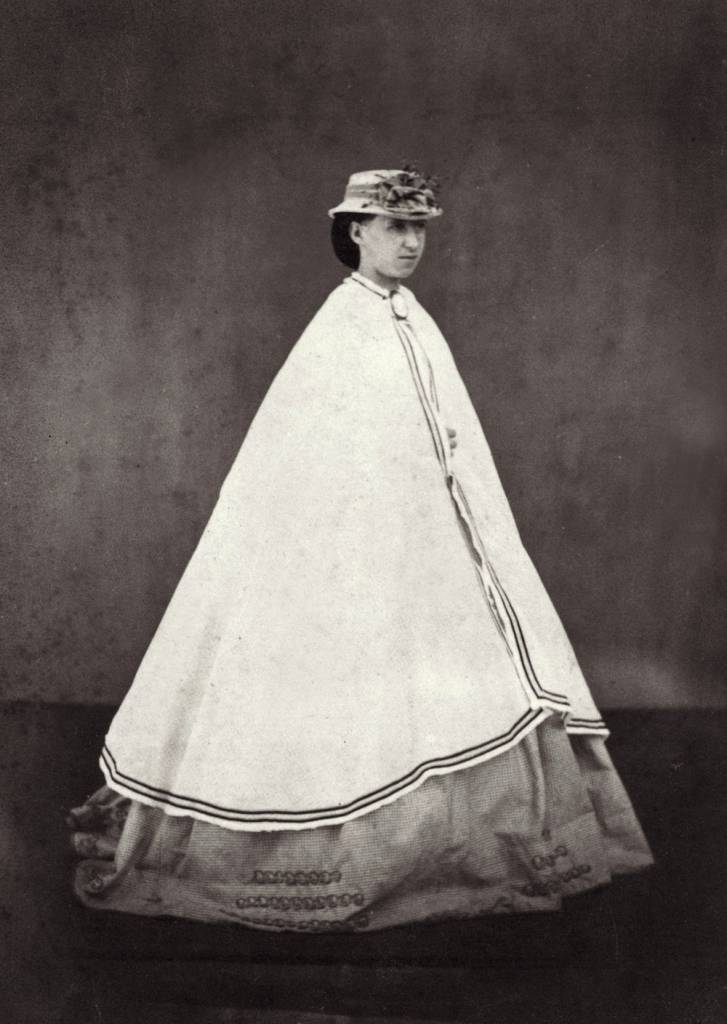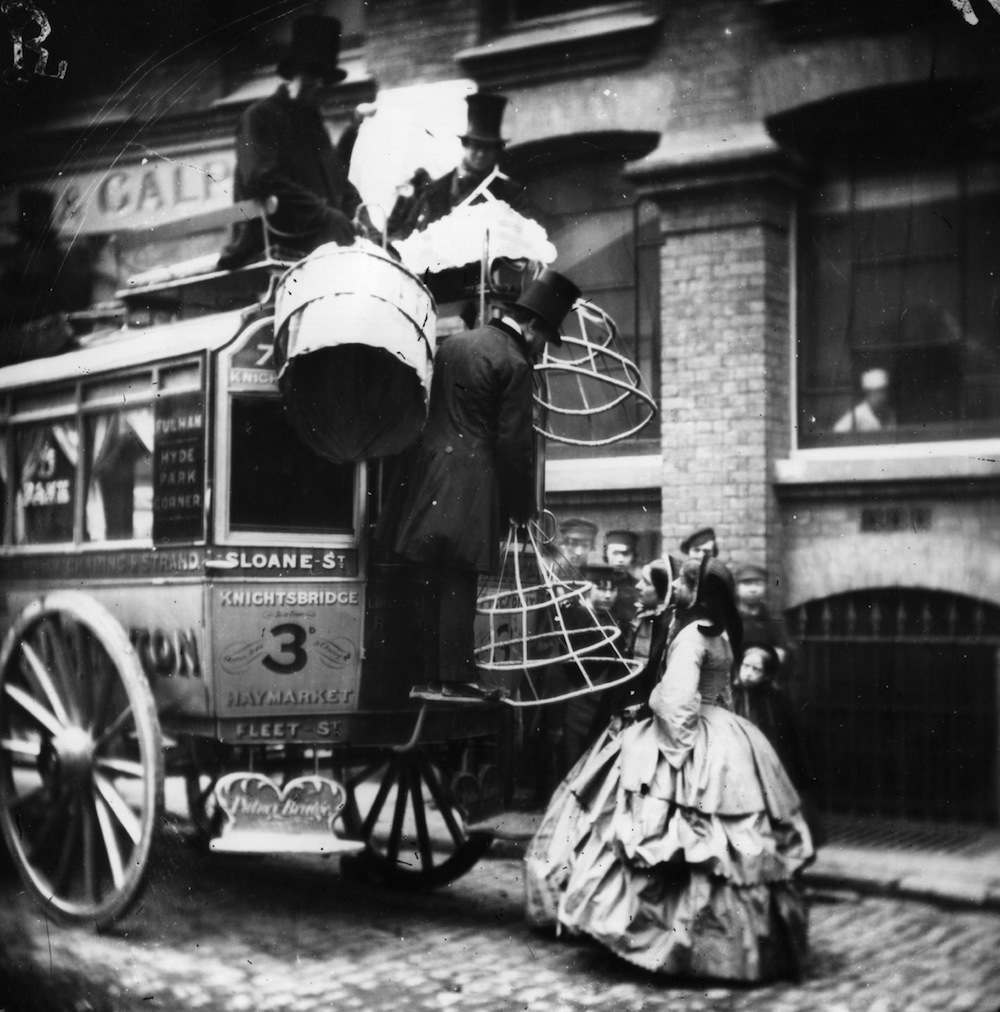
1854: Ladies’ crinolines are loaded onto an omnibus going from Sloane Street to Fleet Street, London. London Stereoscopic Company Comic Series (Photo by London Stereoscopic Company/Getty Images)
Of all the man-made devices intended to retrain womanhood the crinoline is surely the most elaborate. The huge crinoline served to extentuate the constrained waist, keep men at arm’s length and give shelter from the elements to children and pets. In the Victorian age of empire, the crinoline was less a fashion item than it was a land grab. The stealth crinolin’s obvious potential for facilitating Trojan Horse-style invasion of the Maharaja’s chambers might not be the full story of how Britain colonised the world, but no tribal chief could ever be certain what lay beneath the fair lady’s skirts until it was too late.
The V&A traces the origins or this marquee Victorian fashion:
The corsets of the 1840s were cut from separate pieces stitched together to give roundness to the bust and shaping over the hips. A broad busk (a flat length of wood or steel) was inserted up the centre front of the corset to give a smooth line to the bodice of the dress. Strips of whalebone were also inserted up the back and sometimes down the side and front, to give more structure. Corsets also had to be rigid to conceal the layers of underwear, including chemise, drawers and petticoat, which were worn underneath.
The skirts of these dresses presented problems of their own. They increased in size and had to be supported by layers of heavy petticoats which were very hot and unhygienic – particularly in the summer. Bustle-like structures made of down-filled pads or whalebone and stiffened petticoats helped give added support. The most popular type of stiffened petticoat was made out of horsehair and linen which earned it the name crinoline (‘crin’ is the French for horsehair and ‘lin’ the linen thread it was woven with).
The crinoline allowed women to stand still or sit down in any number of settings.
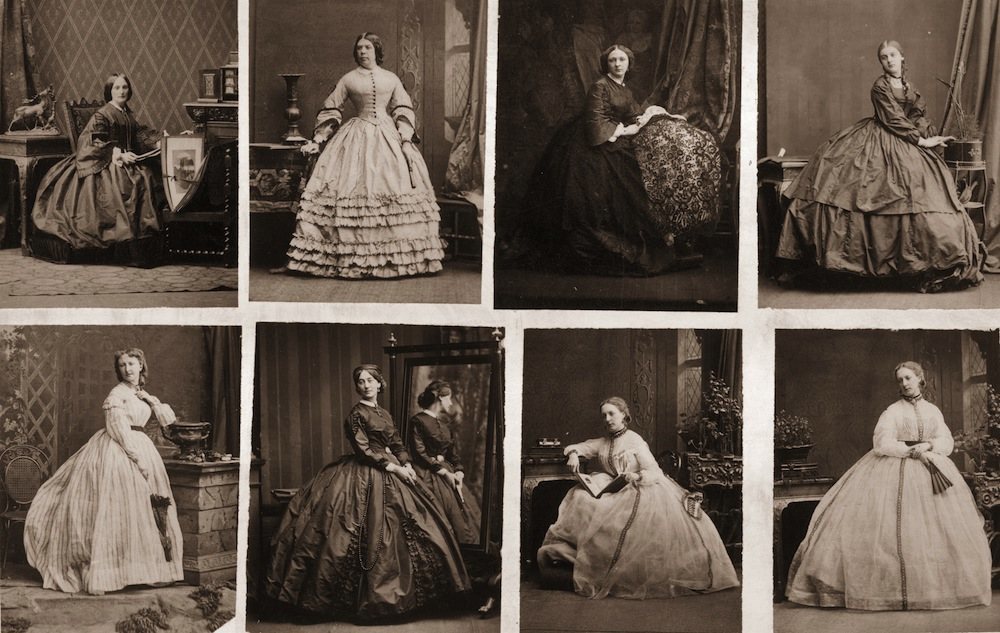
A series of images depicting Victorian women wearing crinolines,circa 1860.(Photo by Hulton Archive/Getty Images)
The development of the sewing machine in the early 1850s was one of the most important innovations of the 19th century as it led to the mass production of clothes including underwear… In the 1850s, however, it was not so much the waist as the skirts that were the focus of attention. The skirts grew ever wider and wider, and the flounces and light materials they were made of meant that they needed more and more support. Layers of petticoats including the horsehair crinolines were no longer sufficient, and they were very heavy and uncomfortable. Something more structured was required.
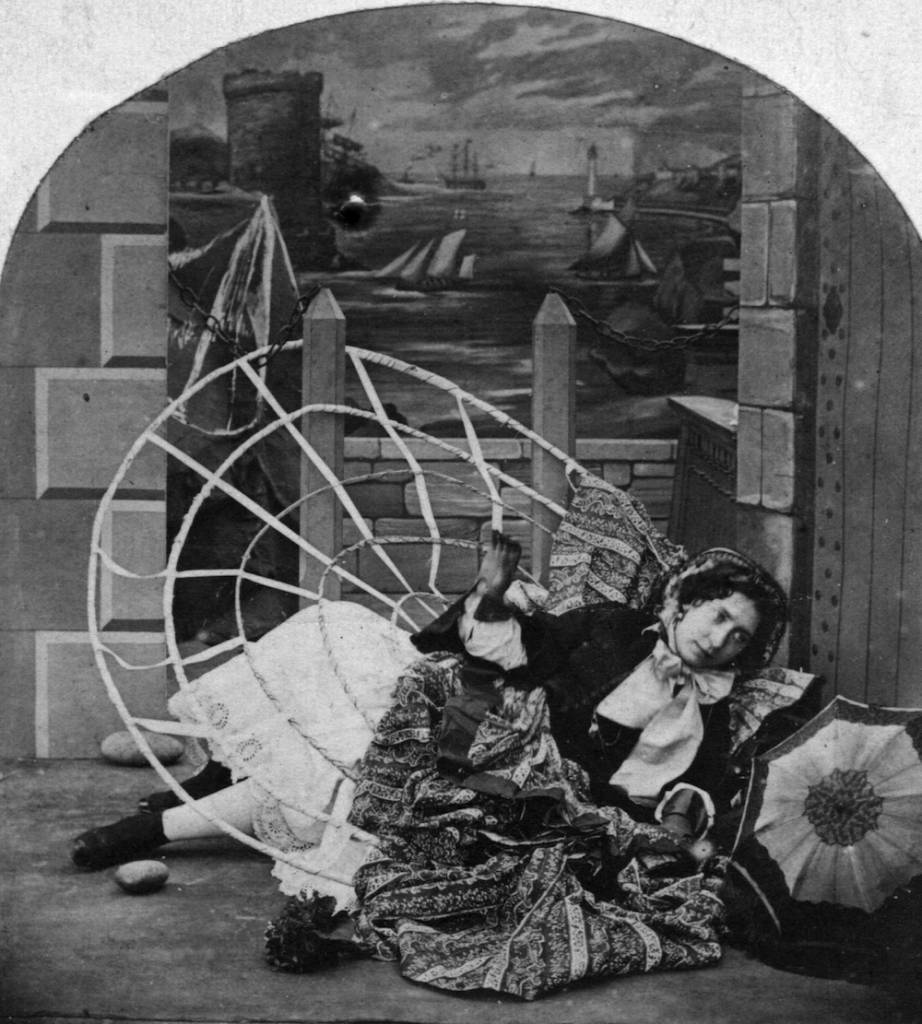
circa 1858: A woman with her hooped skirt caught up around a wooden bollard on the sea front. (Photo by Hulton Archive/Getty Images)
The crinoline became a joke.
The artificial cage crinoline appeared in June 1856 as a welcome and more practical alternative. It was made of spring steel hoops, increasing in diameter towards the bottom, suspended on cotton tapes. This design was strong enough to support the skirts and create the desired bell-shaped effect. The fashion was so popular that Punch nicknamed the crinoline craze ‘Crinolinemania’.

circa 1860: The perils of crinoline in a high north wind! A young woman clings desperately to a lamppost at the seaside, while her skirt billows behind her. Ostende & Blankenberghe. (Photo by Hulton Archive/Getty Images)
Much has been written and drawn to criticise and satirise the crinoline. The dangers and inconveniences of wearing the cage were much publicised at the time, and included being unable to fit into carriages or through narrow doorways….
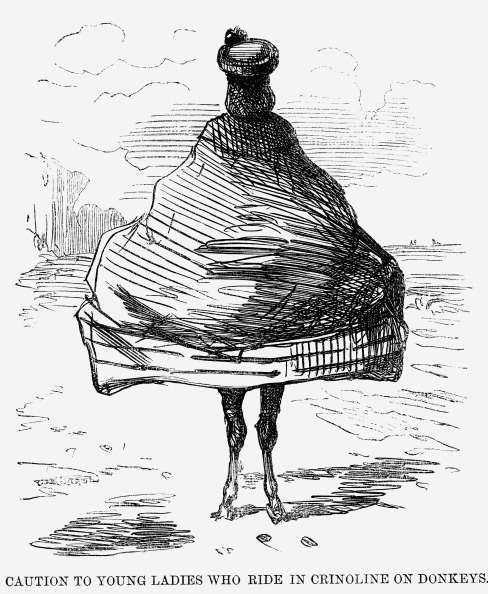
‘Caution to Young Ladies who ride in Crinoline on Donkeys’, 1860. A wonderfully comic cartoon that refers to one of Punch’s favourite targets; the fashionable crinoline. This one shows just how careful the young lady of fashion must be to make sure she knows what she looks like from the back. From Punch, or the London Charivari, November 3, 1860. (Photo by The Cartoon Collector/Print Collector/Getty Images)
The spring steel structures were also very light so rather than imprisoning women in cages… they had a liberating effect. They freed women from the layers and layers of heavy petticoats and were much more hygienic and comfortable. The Lady’s Newspaper of 1863 extolled the virtues of a cage crinoline:
‘So perfect are the wave-like bands that a lady may ascend a steep stair, lean against a table, throw herself into an armchair, pass to her stall at the opera, and occupy a further seat in a carriage, without inconveniencing herself or others, and provoking the rude remarks of observers thus modifying in an important degree, all those peculiarities tending to destroy the modesty of Englishwomen; and lastly, it allows the dress to fall in graceful folds.’
The scene below featues one woman impersonating a ‘big top’ circus tent.
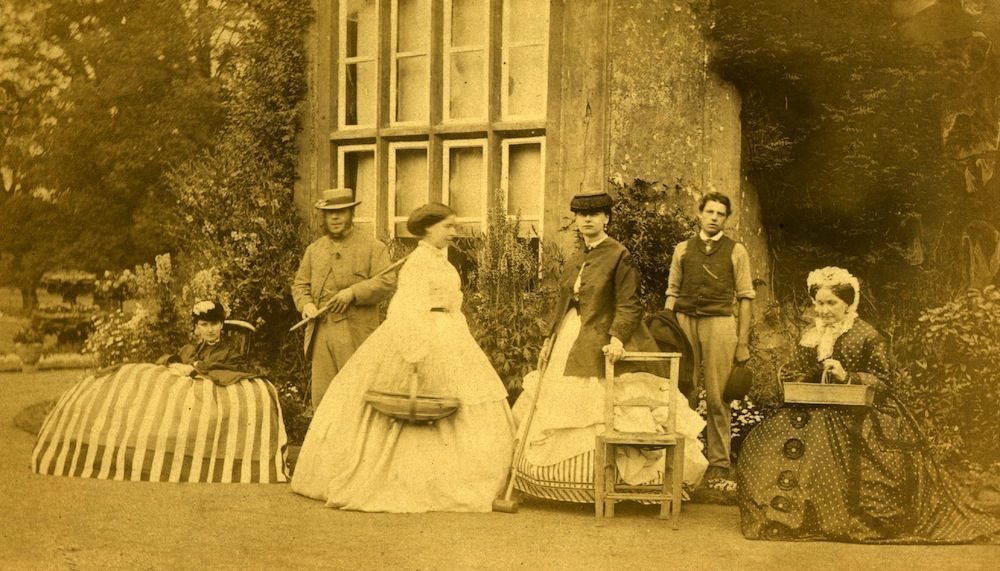
circa 1860: A Victorian family in the garden. (Photo by Colonel H. W. Verschoyle/Hulton Archive/Getty Images)
In 1860, The London Stereoscopic Company produced the Comic Series ‘scene from a ladies dressing room, preparing for the crinoline’.

circa 1860: The scene from a ladies dressing room, preparing for the crinoline. London Stereoscopic Company Comic Series – 503 (Photo by London Stereoscopic Company/Getty Images)
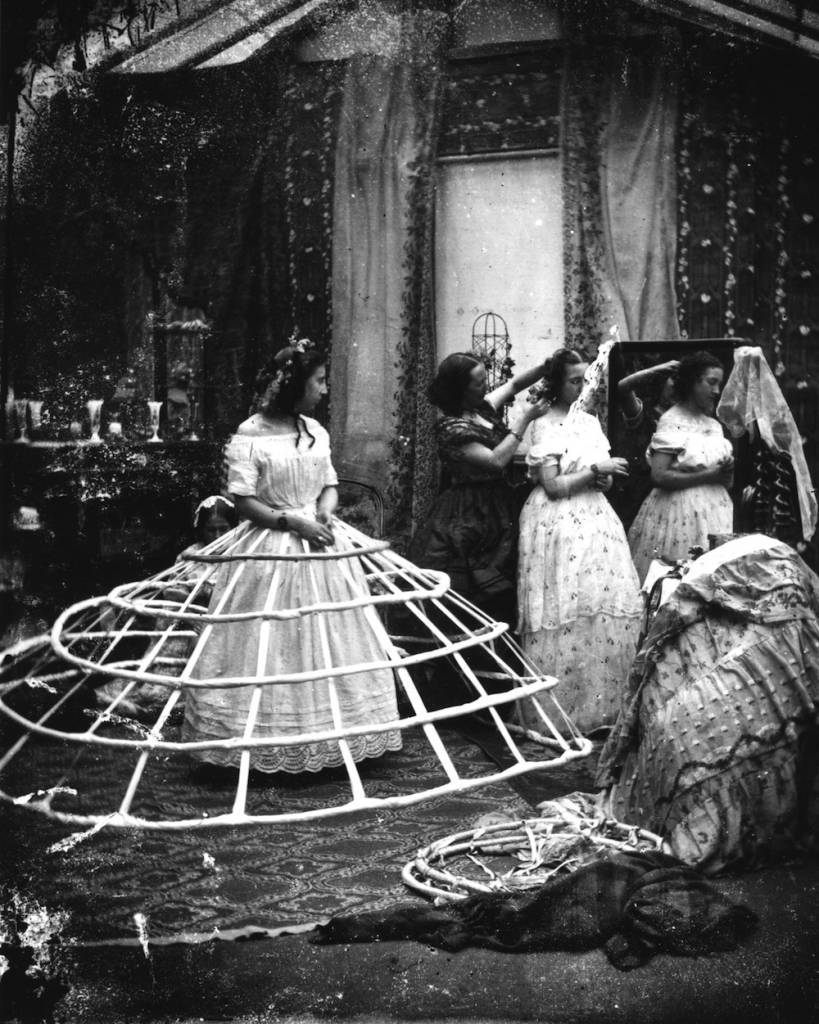
The hoops used to support the crinoline dress during Victorian times. (Photo by London Stereoscopic Company/Getty Images)
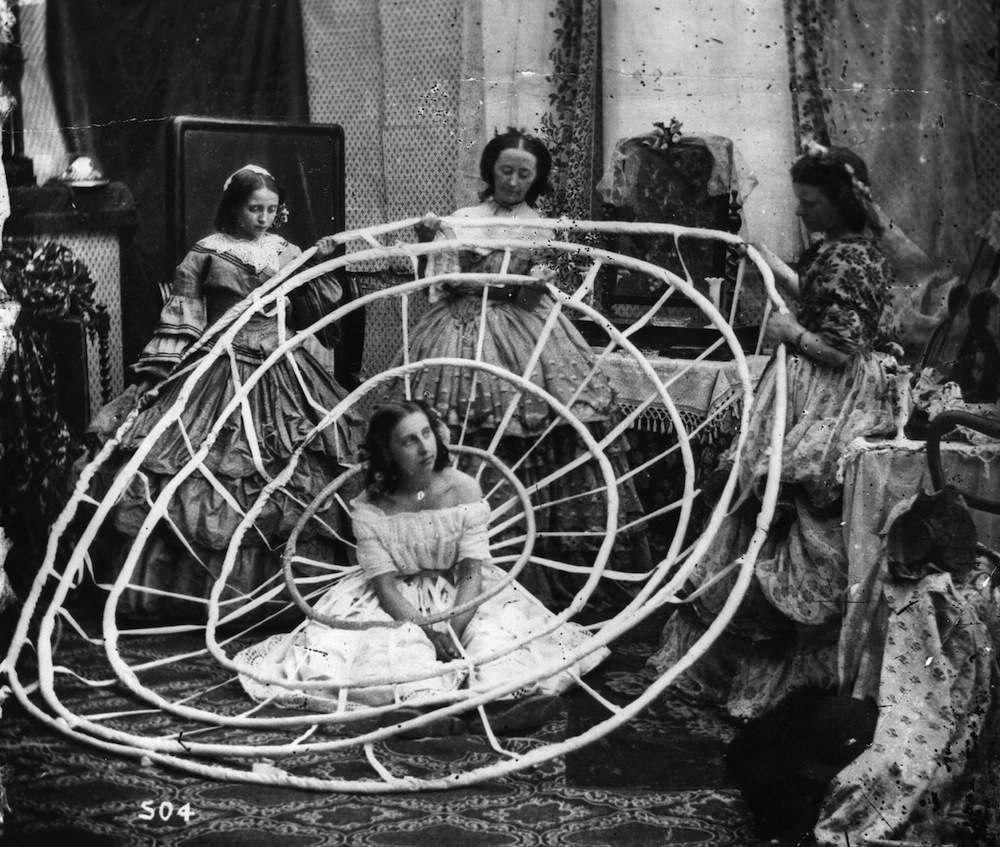
A young woman waits patiently whilst the hoops to support her crinoline are prepared. London Stereoscopic Company Comic Series – 504 (Photo by London Stereoscopic Company/Getty Images)
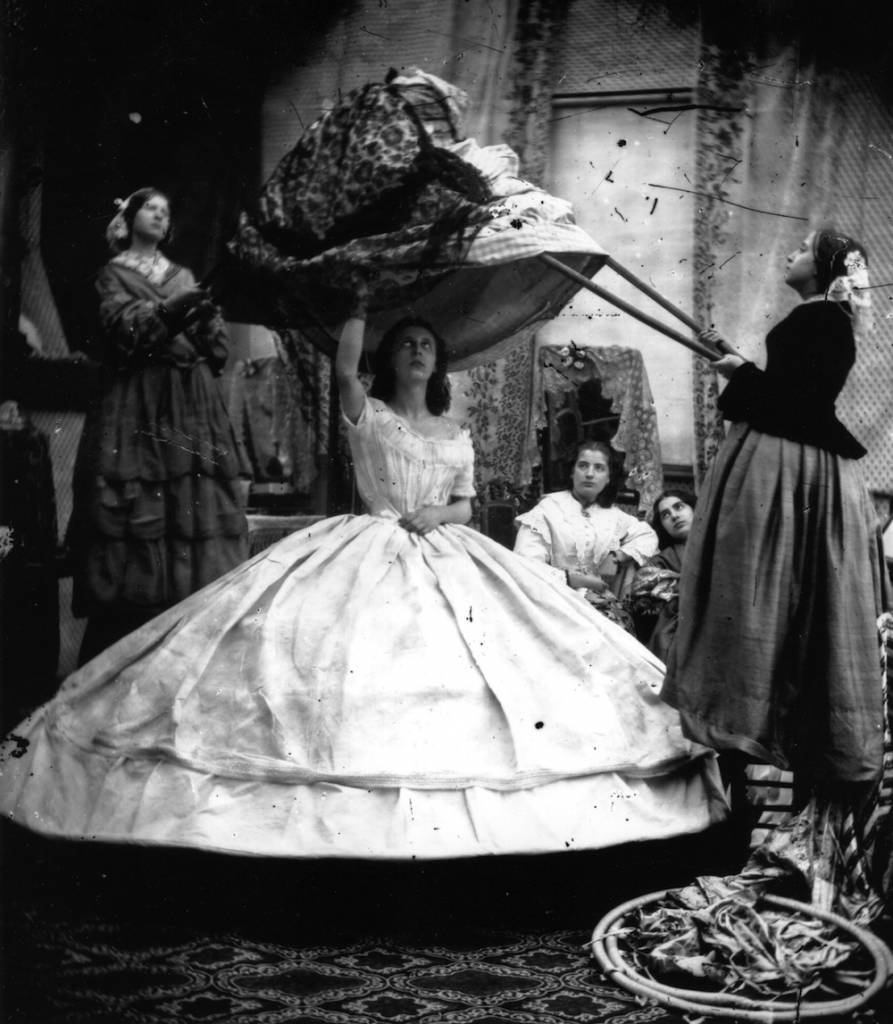
A woman wearing a crinoline being dressed with the aid of long poles to lift her dress over the hoops. (Photo by London Stereoscopic Company/Getty Images)
Of course, the Devil could still make work for idle hands.
A kiss under the mistletoe was the reward for any man able to conquer the crinoline mountain.
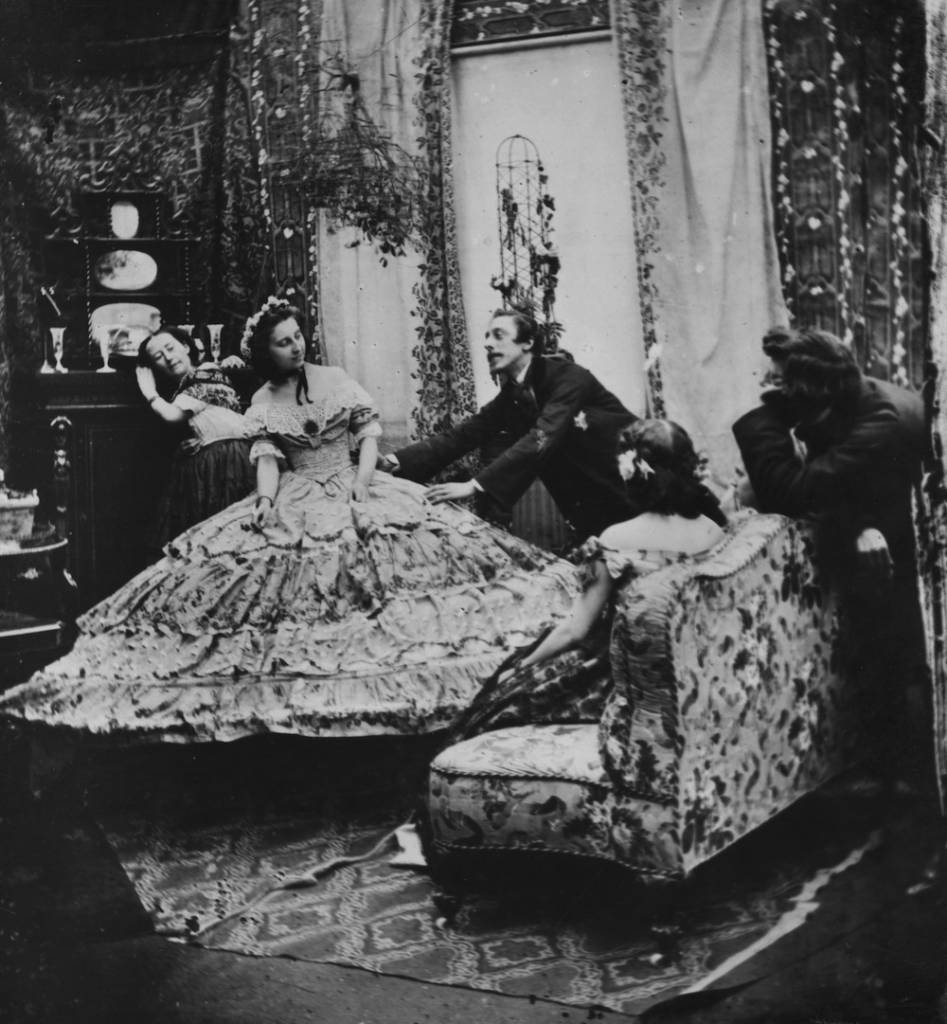
1865: An ardent suitor finds it difficult to reach across the crinoline to steal a kiss under the mistletoe. London Stereoscopic Company Comic Series – 443 (Photo by London Stereoscopic Company/Getty Images)
Enflamed by a mad desire, Henry has kicked over his stool but Flossie is still seated on hers? She can wait. But his leg is going to sleep.
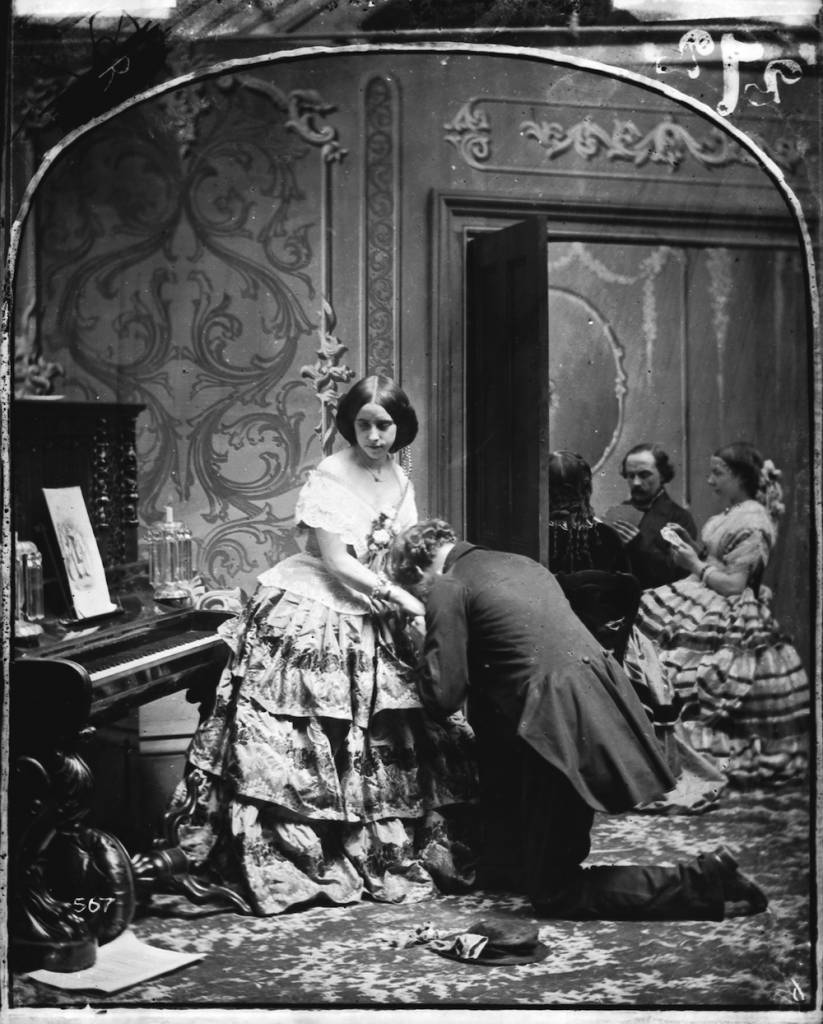
circa 1865: A young man holding his head in his lover’s hands as he pleads with her whilst a group of card players sit in an adjoining room. London Stereoscopic Company Comic Series – 567 (Photo by London Stereoscopic Company/Getty Images)
This crinoline qualifies as a mid-sized starter home in London.
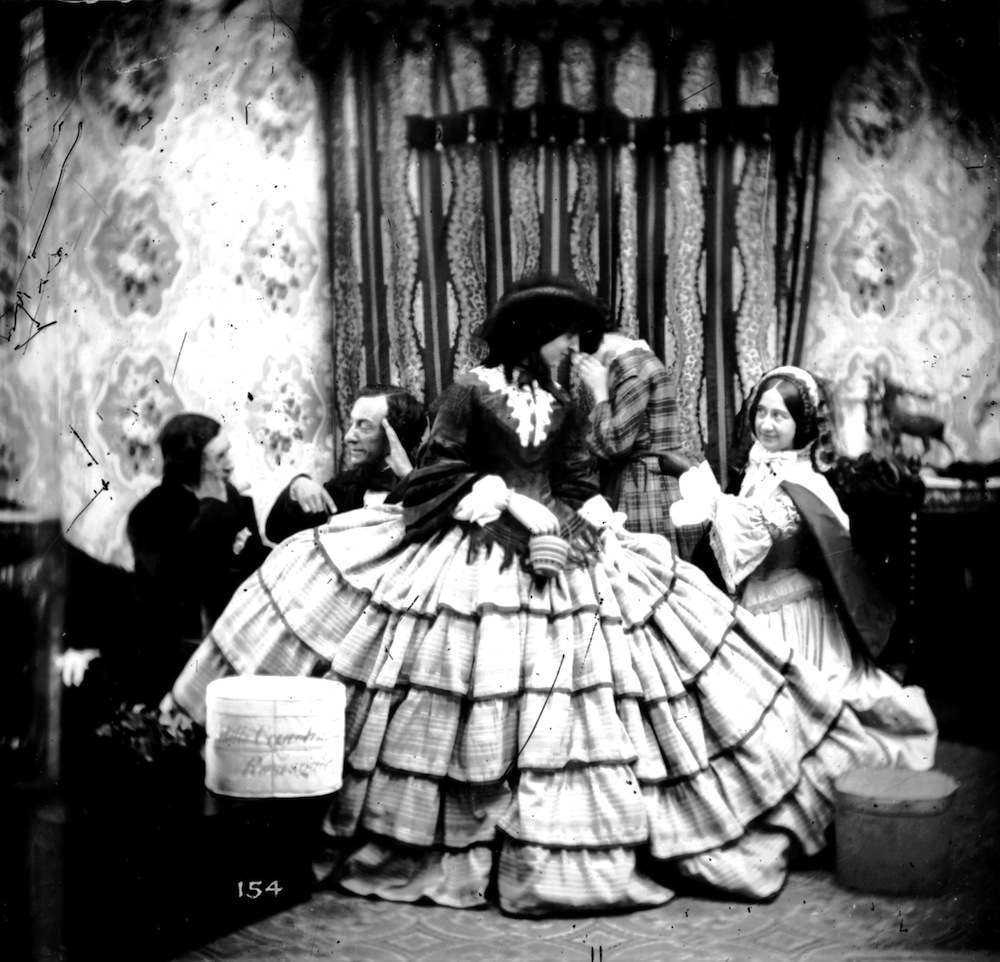
circa 1865: A woman wearing an exceptionally wide crinoline skirt. London Stereoscopic Company Comic Series – 154 (Photo by London Stereoscopic Company/Getty Images)
The left hand doesn’t know what the right hand is doing. Knight to Queen six:
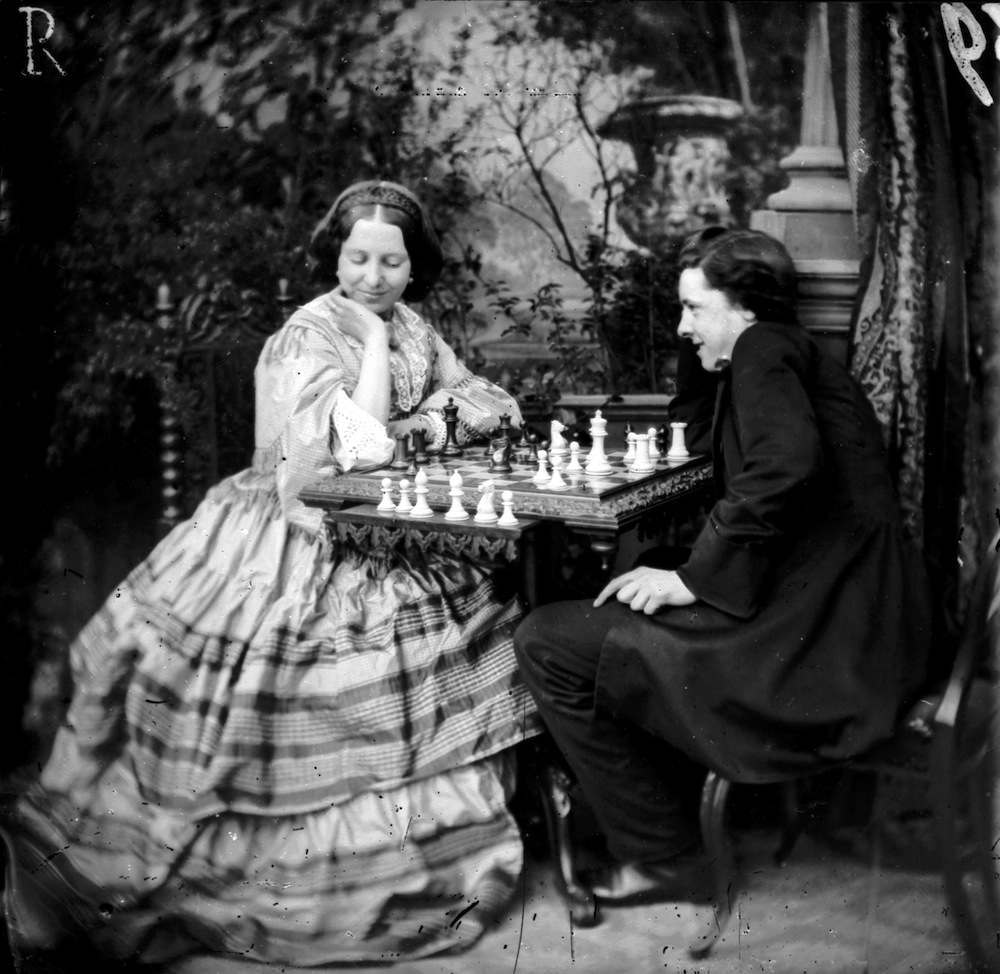
circa 1865: A young couple playing a game of chess. London Stereoscopic Company Comic Series – 336 (Photo by London Stereoscopic Company/Getty Images)
Would you like to support Flashbak?
Please consider making a donation to our site. We don't want to rely on ads to bring you the best of visual culture. You can also support us by signing up to our Mailing List. And you can also follow us on Facebook, Instagram and Twitter. For great art and culture delivered to your door, visit our shop.
